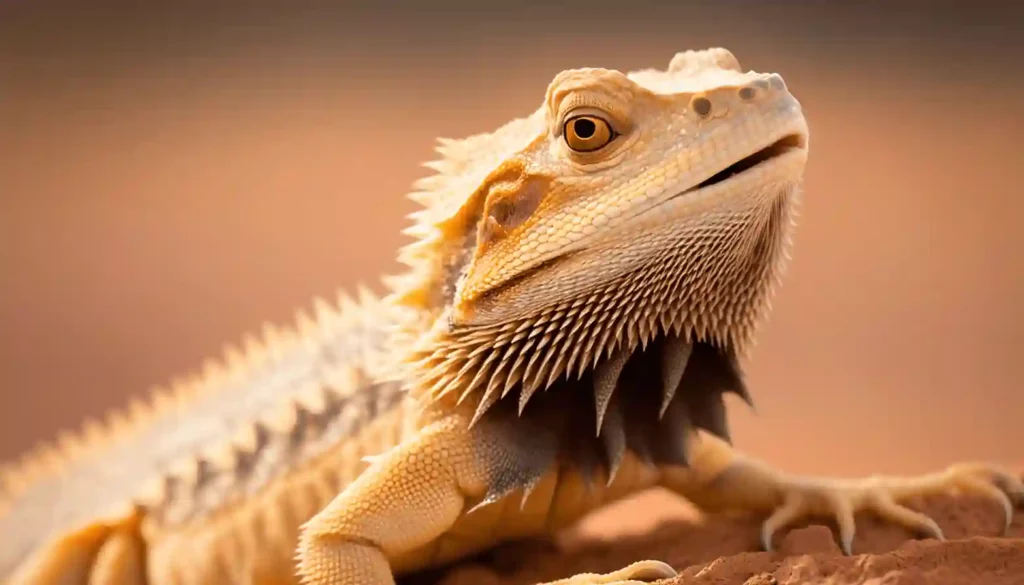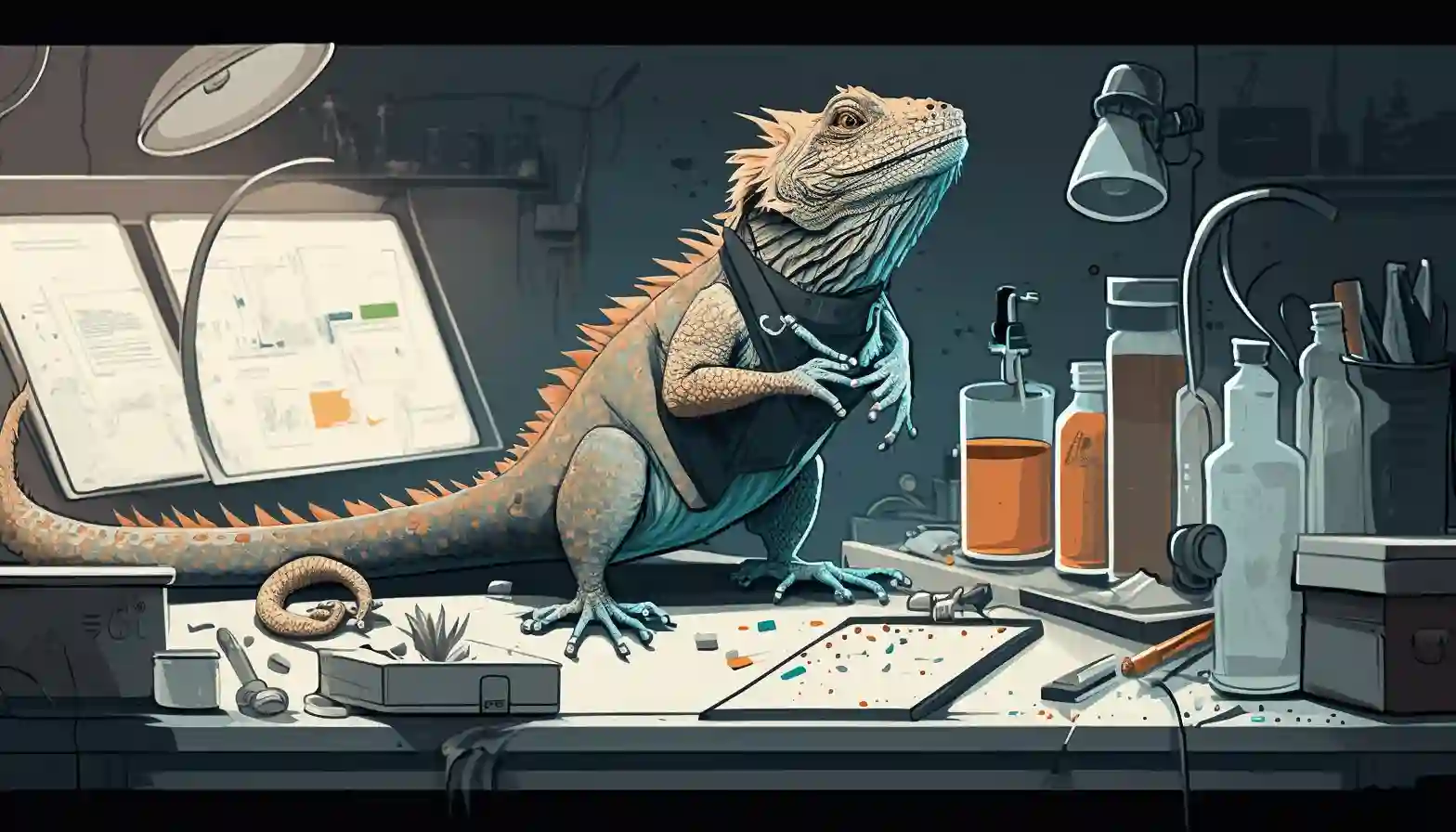Bearded dragons are intelligent reptiles that display a significant degree of problem-solving and can recognize their owners. They are capable of learning habits, recognizing their owners’ faces, voices, and hand signals.
Bearded dragons can remember routines and patterns, which may be suitable for training them. They are also social creatures and enjoy the company of their owners.
While reptiles have a reputation for being less intelligent than mammals, research has shown that bearded dragons are actually quite clever creatures.
They have been shown to be able to solve simple problems and make decisions based on past experiences.
However, they may not perform certain activities compared to humans but can take specific actions that one may consider very intelligent, including an appropriate recognition of pain or pleasure.
Characteristics
Bearded dragons, or Pogona vitticeps, are a captivating species of reptile.
With their signature spiky beards and a wide array of colors, they have the ability to mesmerize with but one glance.
Coloration ranges from yellow-brown through grayish tones and orange hues; these beautiful creatures can also display various shades and combinations between them depending on the season or situation.
These reptiles generally reach an adult size of 18-24 inches in length and may live up to 8 years or longer when properly cared for.
These fascinating lizards are intelligent animals capable of forming strong bonds with their owners due to the amount of time spent together.
They demonstrate this intelligence by responding to sounds such as calling out their name and being able to recognize people who interact positively with them regularly.
Diet & Nutrition

Bearded dragons are omnivorous reptiles that require a balanced diet of live food and greens.
Their dietary needs vary depending on their age, growth rate, size, health condition, activity level, and environment.
Understanding the nutritional requirements of bearded dragons is essential to maintain optimal health.
Live food such as crickets should make up 40-50% of an adult bearded dragon’s diet.
These insects can provide necessary proteins and fats in addition to other minerals and vitamins needed for healthy growth.
Greens should make up about 25-40%, with vegetables providing additional sources of calcium and beta-carotene.
It is important to feed them fresh food daily or every other day, making sure not to overfeed them which may lead to obesity or malnutrition.
Vegetables should be dusted lightly with a calcium supplement before feeding them to bearded dragons twice weekly.
Bearded dragons also need access to clean water at all times throughout the day; they tend to drink from puddles or shallow dishes when available.
Proper nutrition is vital for the well-being of bearded dragons since it helps ensure proper organ function, physical development, energy levels, appetite stimulation, immune system strength, skeletal structure formation, and mental acuity.
Habitat & Environment
Bearded dragons, renowned for their intelligence and sly wit, have been known to astound even the most experienced reptile hobbyists.
One might be led to believe that such creatures must possess an equally impressive habitat and environment in order to thrive.
Indeed, these lovable reptiles require specific conditions in order to maintain a healthy lifestyle.
When providing a suitable home for your bearded dragon, it is important to consider both its habitat requirements and environmental needs.
The enclosure should consist of substrate material such as newspaper or tile, preferably with some type of décor that provides hiding spots.
It must also include appropriate lighting fixtures designed specifically for reptiles.
Temperature-wise, the ambient temperature should range between 75-85 degrees Fahrenheit while basking areas can rise up to 95 degrees; however, temperatures higher than this are not recommended due to potential health risks associated with overheating.
Additionally, humidity levels should remain consistent at around 30-50%.
A misting system may help regulate humidity within the terrarium if necessary.
Behavioral Traits

Bearded dragons have a variety of behavioral traits that are interesting to observe.
They are social creatures and enjoy the company of their conspecifics when given ample space.
They can be kept in pairs or small groups as long as there is plenty of room to roam about.
In addition, they often interact with each other by basking together in communal areas.
Their foraging habits involve gathering food from leaves, branches, and the ground.
Furthermore, bearded dragons will sleep during the day and become active at night or in twilight when temperatures drop.
Alongside physical activity, vocalizations such as hissing, grunting, barking, and clicking noises are also common signs of communication between two individuals or within larger groups.
Territoriality amongst males has been observed where they display aggressive behavior towards one another while competing over resources such as mates or territory ownership.
Interaction With Humans

Bearded dragons, prehistoric-looking lizards, are considered one of the most interactive and intelligent reptile species.
When handled carefully and given proper socialization from an early age, these creatures can develop a strong bond with their owners.
Here are four key aspects to consider when it comes to human interaction with bearded dragons:
- Handling – Bearded dragons’ delicate nature must be taken into account while handling them. It is essential that they are not picked up in any rough manner as this could cause stress or injury.
- Socialization – A bearded dragon should be exposed to regular contact with humans for at least 10 minutes multiple times throughout the week so that it becomes accustomed to its owner’s presence. This will help build trust between the two and make it easier for further bonding sessions.
- Bonding – As time passes and trust builds between the human and bearded dragon, more physical interactions such as petting or cuddles may become possible. These moments of connection create memories that strengthen their relationship even further over time.
- Human-dragon communication – Understanding your pet’s behavior is vital if you want to have successful interactions with them; look out for signs like head bobbing which signals submission or aggression respectively during playtime activities or feeding periods.
